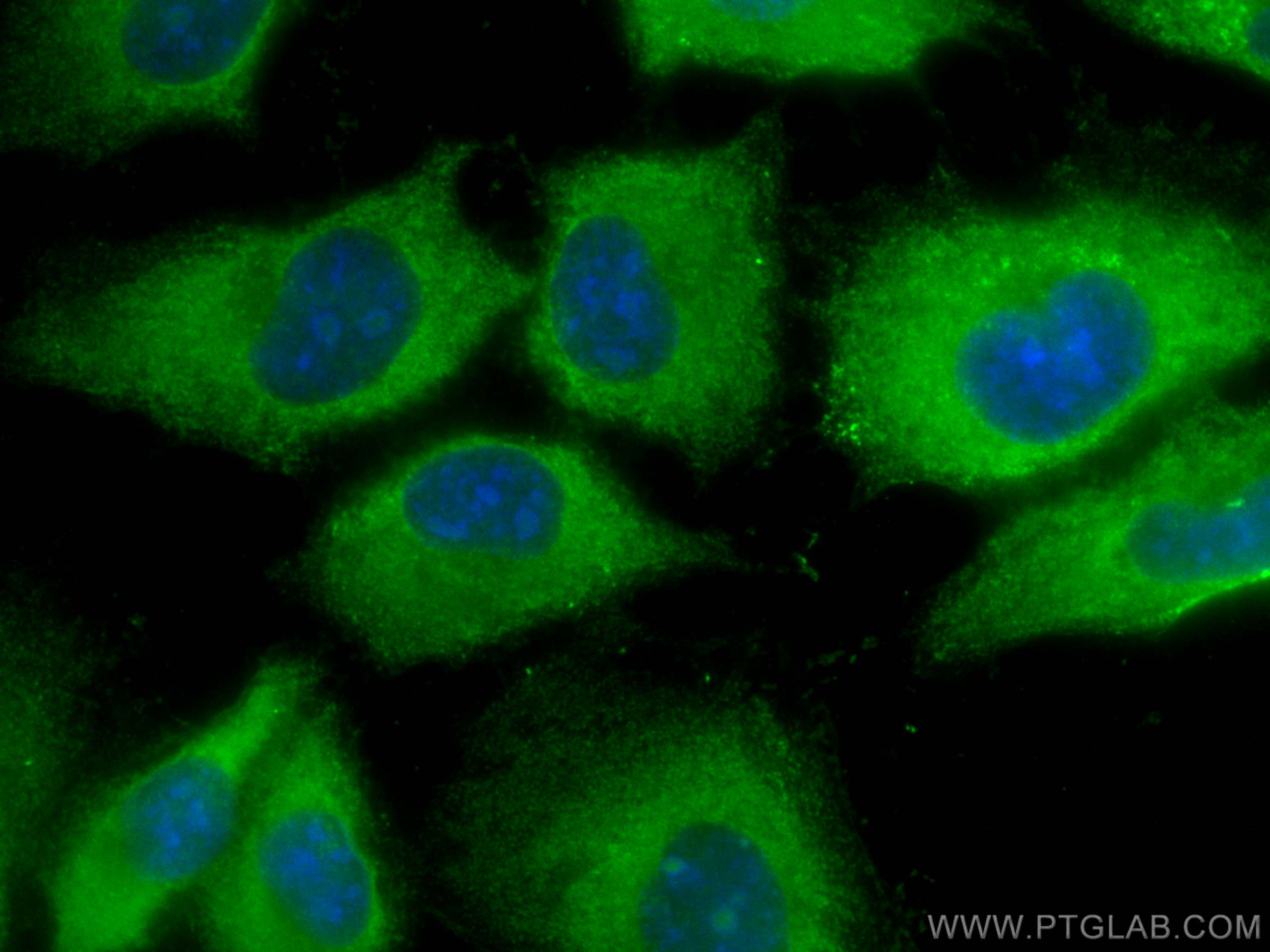CoraLite® Plus 488-conjugated C1qC Monoclonal antibody
C1qC Monoclonal Antibody for IF
Host / Isotype
Mouse / IgM
Reactivity
human
Applications
IF
Conjugate
CoraLite® Plus 488 Fluorescent Dye
CloneNo.
1C5B4
Cat no : CL488-66268
Synonyms
Validation Data Gallery
Tested Applications
| Positive IF detected in | HUVEC cells |
Recommended dilution
| Application | Dilution |
|---|---|
| Immunofluorescence (IF) | IF : 1:50-1:500 |
| Sample-dependent, check data in validation data gallery | |
Product Information
CL488-66268 targets C1qC in IF applications and shows reactivity with human samples.
| Tested Reactivity | human |
| Host / Isotype | Mouse / IgM |
| Class | Monoclonal |
| Type | Antibody |
| Immunogen | C1qC fusion protein Ag10233 相同性解析による交差性が予測される生物種 |
| Full Name | complement component 1, q subcomponent, C chain |
| Calculated molecular weight | 245 aa, 26 kDa |
| Observed molecular weight | 26 kDa |
| GenBank accession number | BC009016 |
| Gene symbol | C1QC |
| Gene ID (NCBI) | 714 |
| Conjugate | CoraLite® Plus 488 Fluorescent Dye |
| Excitation/Emission maxima wavelengths | 493 nm / 522 nm |
| Form | Liquid |
| Purification Method | Thiophilic affinity chromatograph |
| Storage Buffer | PBS with 50% Glycerol, 0.05% Proclin300, 0.5% BSA, pH 7.3. |
| Storage Conditions | Store at -20°C. Avoid exposure to light. Stable for one year after shipment. Aliquoting is unnecessary for -20oC storage. |
Background Information
The first component of complement, C1, is a calcium-dependent complex of the 3 subcomponents C1q, C1r, and C1s. C1q is composed of 18 polypeptide chains: six A-chains, six B-chains, and six C-chains. Each chain contains a collagen-like region located near the N terminus and a C-terminal globular region. Deficiency of C1q has been associated with lupus erythematosus and glomerulonephritis. This antibody is raised against C1qC which is the C-chain polypeptide of human complement subcomponent C1q.
Protocols
| Product Specific Protocols | |
|---|---|
| IF protocol for CL Plus 488 C1qC antibody CL488-66268 | Download protocol |
| Standard Protocols | |
|---|---|
| Click here to view our Standard Protocols |


